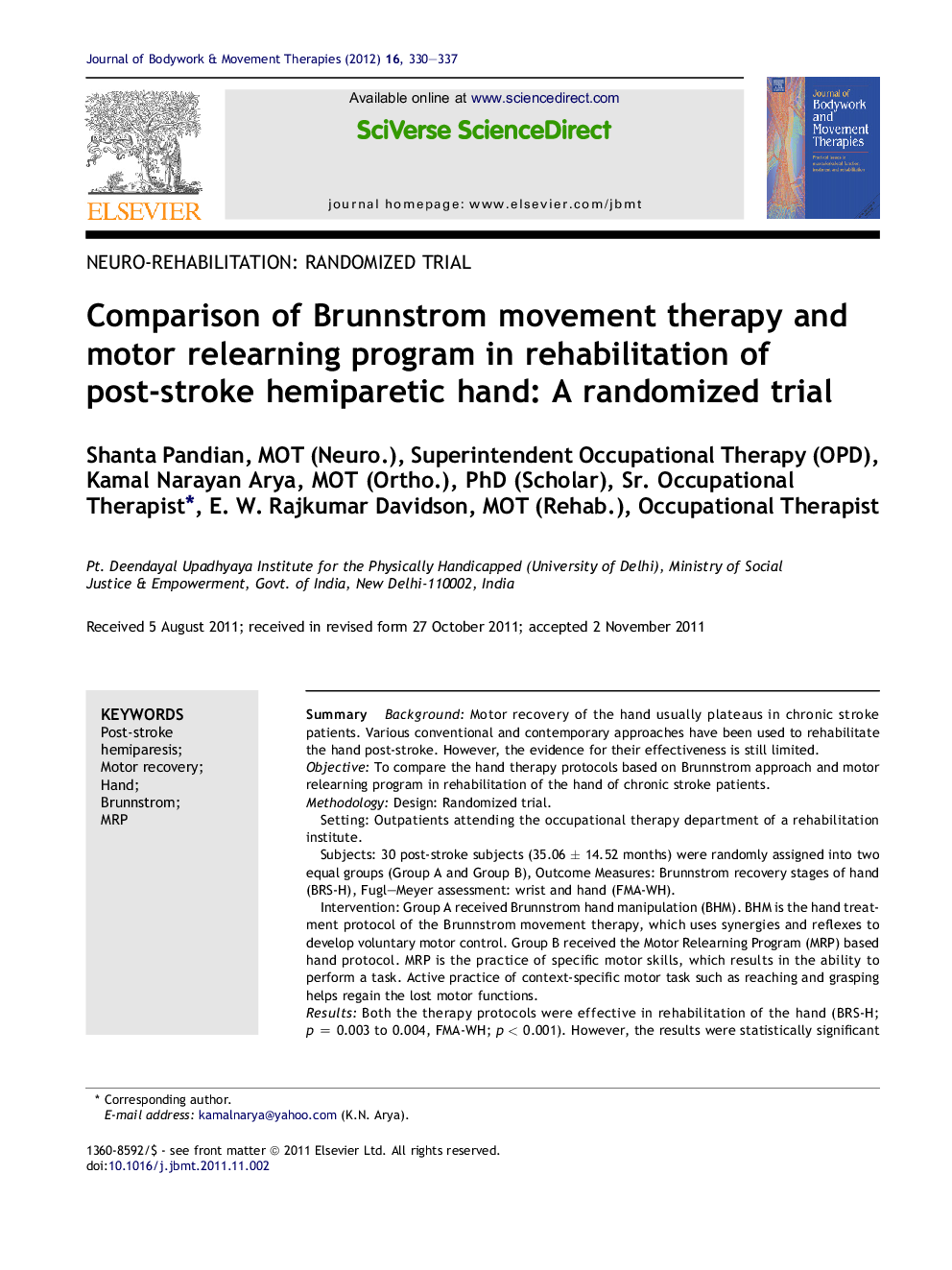| Article ID | Journal | Published Year | Pages | File Type |
|---|---|---|---|---|
| 2619344 | Journal of Bodywork and Movement Therapies | 2012 | 8 Pages |
SummaryBackgroundMotor recovery of the hand usually plateaus in chronic stroke patients. Various conventional and contemporary approaches have been used to rehabilitate the hand post-stroke. However, the evidence for their effectiveness is still limited.ObjectiveTo compare the hand therapy protocols based on Brunnstrom approach and motor relearning program in rehabilitation of the hand of chronic stroke patients.MethodologyDesign: Randomized trial.Setting: Outpatients attending the occupational therapy department of a rehabilitation institute.Subjects: 30 post-stroke subjects (35.06 ± 14.52 months) were randomly assigned into two equal groups (Group A and Group B), Outcome Measures: Brunnstrom recovery stages of hand (BRS-H), Fugl–Meyer assessment: wrist and hand (FMA-WH).Intervention: Group A received Brunnstrom hand manipulation (BHM). BHM is the hand treatment protocol of the Brunnstrom movement therapy, which uses synergies and reflexes to develop voluntary motor control. Group B received the Motor Relearning Program (MRP) based hand protocol. MRP is the practice of specific motor skills, which results in the ability to perform a task. Active practice of context-specific motor task such as reaching and grasping helps regain the lost motor functions.ResultsBoth the therapy protocols were effective in rehabilitation of the hand (BRS-H; p = 0.003 to 0.004, FMA-WH; p < 0.001). However, the results were statistically significant in favor of group A undergoing BHM for FMA-WH (p < 0.004) and FMA item VIII (hand motor recovery) (p < 0.033).ConclusionBHM was found to be more effective than MRP in rehabilitation of the hand in chronic post-stroke patients.
